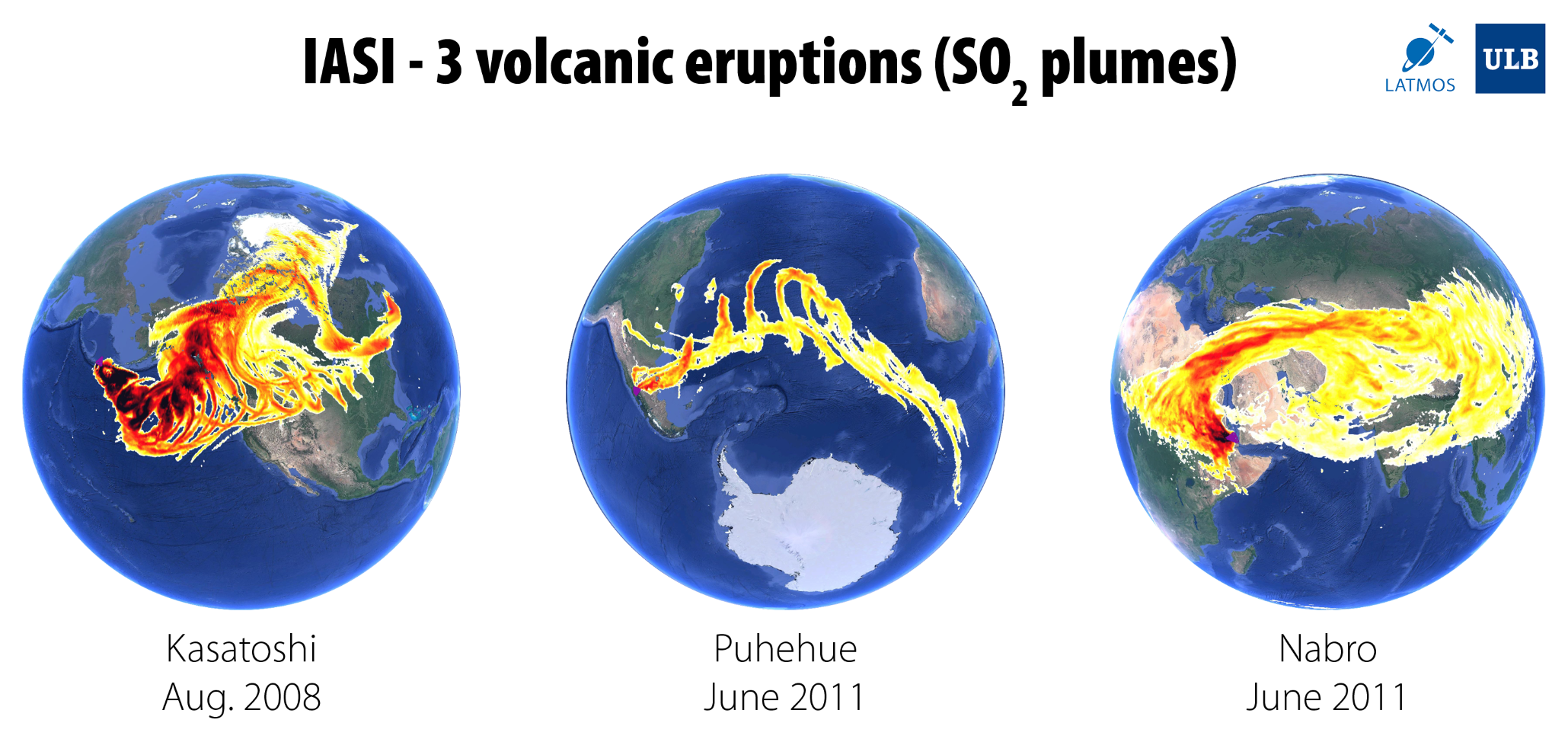> previous page (carbon monoxide)
Sulfur dioxide (SO2)
Yearly, an estimated 5–20% of the total global sulfur emission is due to volcanic sulfur dioxide (SO2). The impact of SO2 on the atmosphere is very much dependent on the height of the eruption. In the troposphere, SO2 oxidizes to sulfate after which it is washed out quickly. The lifetime of SO2 in the stratosphere is of the order of weeks, during which time it gradually forms sulfuric acid aerosols, which have a lifetime in the atmosphere of about three years.
Detection of eruption from space is useful for aviation hazard. Every time that an aircraft traverses a volcanic plume, the fine particles ejected at high altitude from the eruption, damage the engines and the aircraft’s electronic equipment, while simultaneously reduce the visibility of the pilots. For this reason, the International Civil Aviation Organization (ICAO) watches over the international air corridors, by creating 9 Volcanic Ash Advisory Centers (VAACs) inspecting over 9 respective zones of the Earth. Every VAAC is responsible to localize and to preview the evolution of the volcanic plumes during the hours that follow the eruption. This vigilance is performed by watching the SO2 plumes either with ground instruments or with remote sensors on board satellites.
As the L1C data of IASI are acquired in near-real time, a continuous analysis and a systematic surveillance are done in order to detect a possible anomalous threshold of SO2 caused by a volcanic eruption. An automatic system based on IASI data is currently in operation at ULB (http://cpm-ws4.ulb.ac.be/Alerts/), which sends email alerts to the VAACs when high SO2 levels are detected. This IASI detection system, along with other satellite data, is part of the Support to Aviation Control Service (SACS) aiming at providing (in near-real time) SO2 and ash measurements related to volcanic emissions for hazard to aviation.
The IASI SO2 Level products are retrieved in a near-real time mode by exploiting the correlation between brightness temperature differences and SO2 total columns with assumptions on the SO2 plume altitudes (Clarisse et al., 2012). This dataset will be the official Eumetsat product in 2022.
The IASI SO2 products are distributed via the AERIS data center and are available at https://iasi.aeris-data.fr/SO2/.

Figure 1. Spatial distribution of SO2 observed by IASI following three main volcanic eruptions
(Courtesy Lieven Clarisse and Maya George).


